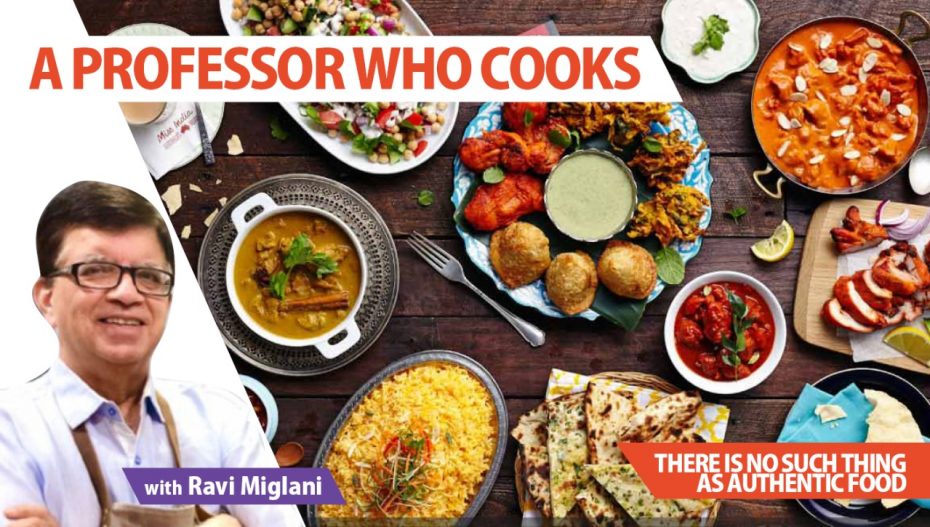Some people say food is life. Well, I say, food is more important than life. Food transcends life. With something so important, no wonder people get inordinately passionate, viscerally emotional, and violently possessive about their food. What really is their food?
This brings me to the authenticity wars. I know at least two nations who would rather go to war than concede that the delectable falafel was not first made in their country. Punjabis would need to down a few Patiala pegs in shock if told that aloo gobhi is not Punjabi. How is aloo gobhi so Punjabi, when neither the aloo, nor the gobhi, was known in India until the potato came to India from the new world through the Portuguese, and the cauliflower came to India with the English colonialists? Every Punjabi will insist that their family recipe for rajma is the only real rajma. Really? When a couple of hundred years ago rajma (red kidney beans) had not yet left the shores of Mexico?
Is the authentic dosa from Tamil Nadu or from Karnataka? Tell any resident of Udupi in Karnataka that dosa is Tamil, and you will be crushed flatter than said dosa. Idli has a cult following in much of Tamil Nadu, but many scholars believe that the technique of steaming rice came to the Tamils from present-day Indonesia, where Hindu dynasties had kingdoms in the 9th and 10th centuries.
Is the chicken tikka masala a Delhi invention? Tell that to any self-respecting Bangladeshi curry house owner in London, and you will not enter their premises ever again. Would Mumbaikars boycott the beaches of Goa if Goans were to suggest that the pav – the soul of Mumbaiya pav bhaji and vada pav – was invented in Goa, inspired by the Portuguese?
Is the taco really Mexican, or a Mexican twist on the shawarma carried to Mexico by the Lebanese migrants a hundred years ago? Many cities in India – from Lucknow to Hyderabad – claim they are the custodians of the real biryani. Are they? Didn’t the biryani, like so much of North Indian food, come from the Middle East and Central Asia?
The chaatwala on the aroma-infused smoke-laden streets of Chandni Chowk in Delhi will hurl his bowl of chaat masala in your face if you suggest that his samosa came from the Middle East. The not-so-sweet truth: the quintessential Indian jalebi started its circuitous journey as zalibiya in Persia; gulab jamun was the more exotically named luqmat al qadi in the Middle East. To top it all, if you are still hung up about authenticity, drop your glass of masala chai now, as tea did not come into India until 200 years ago from China, when it became embroiled in the murky opium wars between the British Empire and China.
Almost all the food we now call American has its origins in either the slave trade with West Africa (the soul food of the southern USA is almost entirely African in origin) or in Europe – the hamburgers and sausages from Germany, the pizza from Italy. Apples were introduced to America from Europe, and yet we say nothing is as American as apple pie!
I hope I have convinced you that no food is originally from anywhere; nothing is authentic. The world is a large melting pot. And thank goodness for that. This melding and merging and mixing and mutation and metamorphosis of ingredients and cooking methods is what has enhanced every cuisine in the world. Try to imagine Indian food without potato, cauliflower, tomato, chillies, rajma, tandoor, jalebi, samosa, carrots (say bye to gajar halwa), pav, chai, coffee; I could go on. You don’t need to imagine; welcome to the Indian kitchen of 300 years ago. Raise your hand if you want to go back to that Indian food. Good good, I see no raised hands.
This Professor Cooks. And talks about food ideas, food science, food culture, food hacks, and food history. Watch this space for some food, and a lot more food for thought.
Ravi Miglani is a home cook and consumer insights professional. Following a corporate career spanning eight countries and three decades, he is now a professor at Ahmedabad University (when he is not cooking).
Ravi Miglani is a home cook and consumer insights professional. Following a corporate career spanning eight countries and three decades, he is now a professor at Ahmedabad University (when he isn’t cooking).










